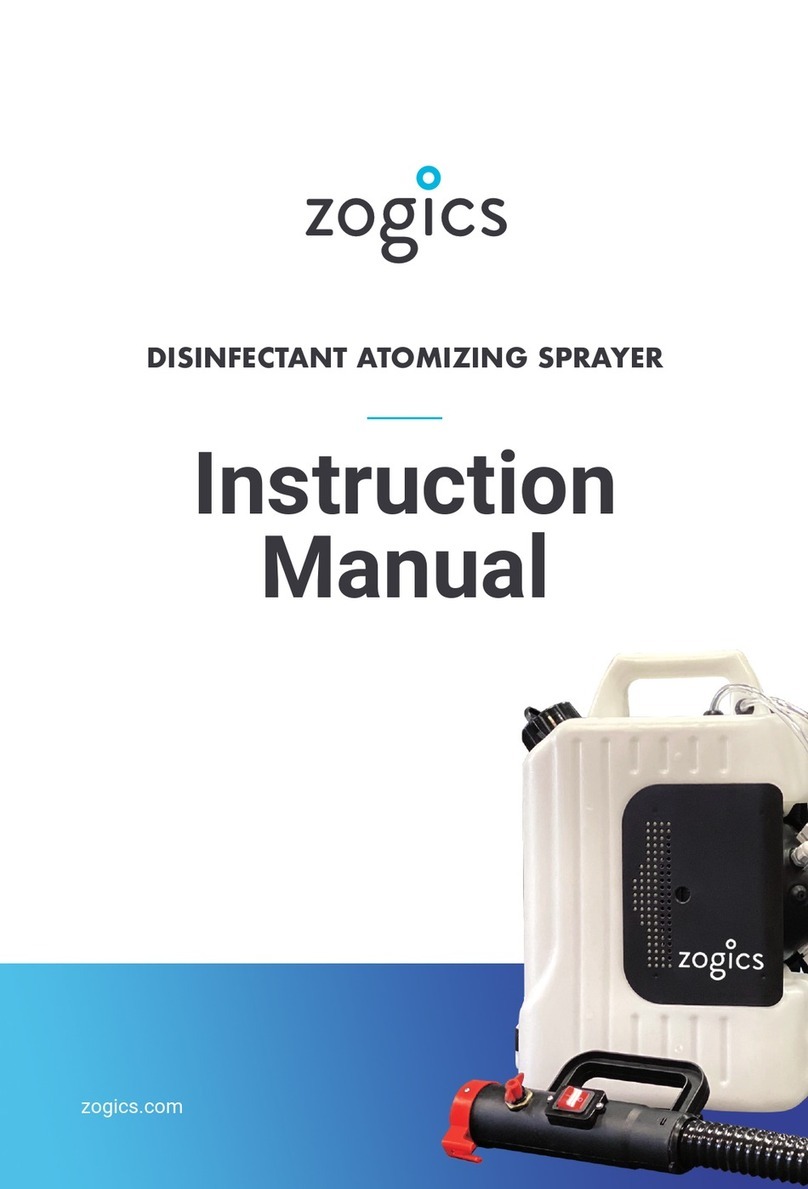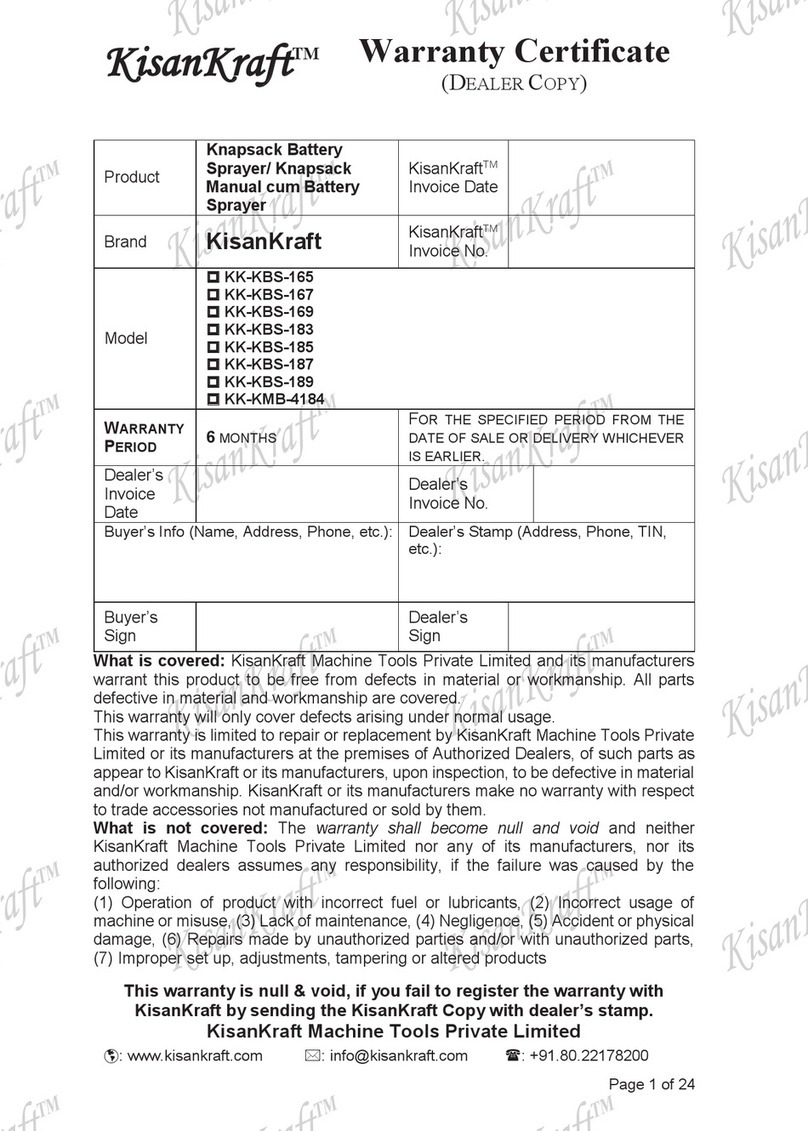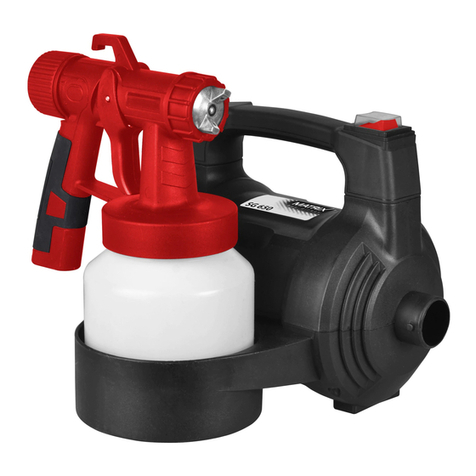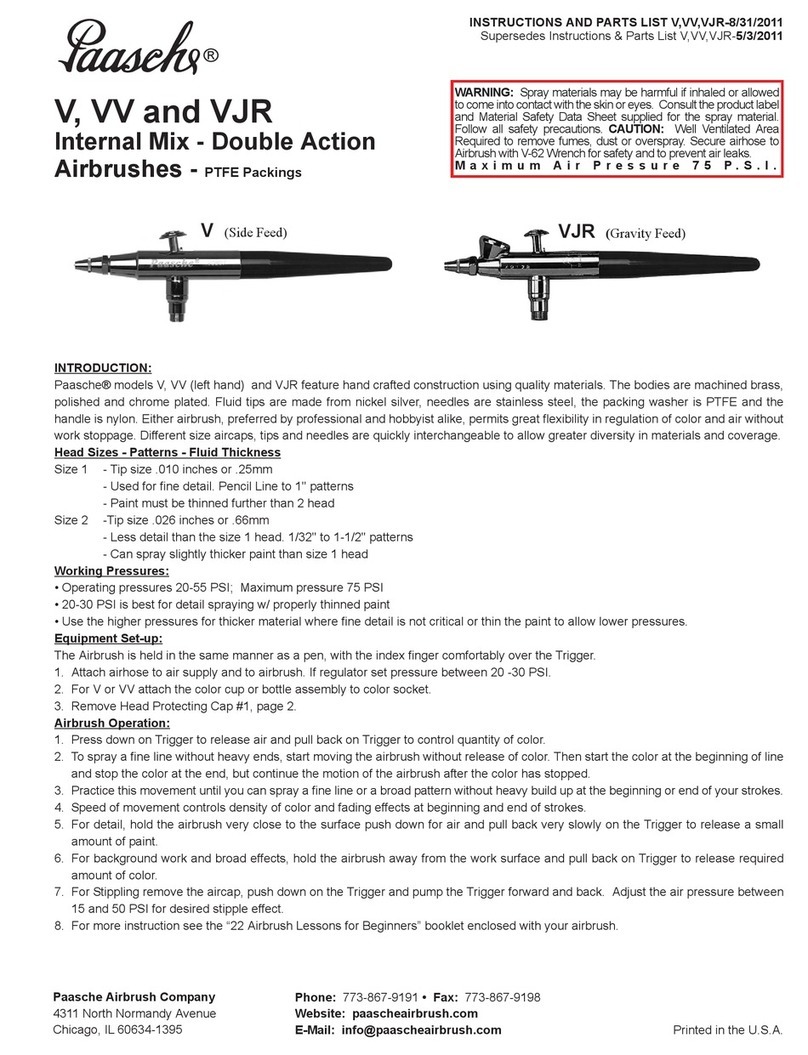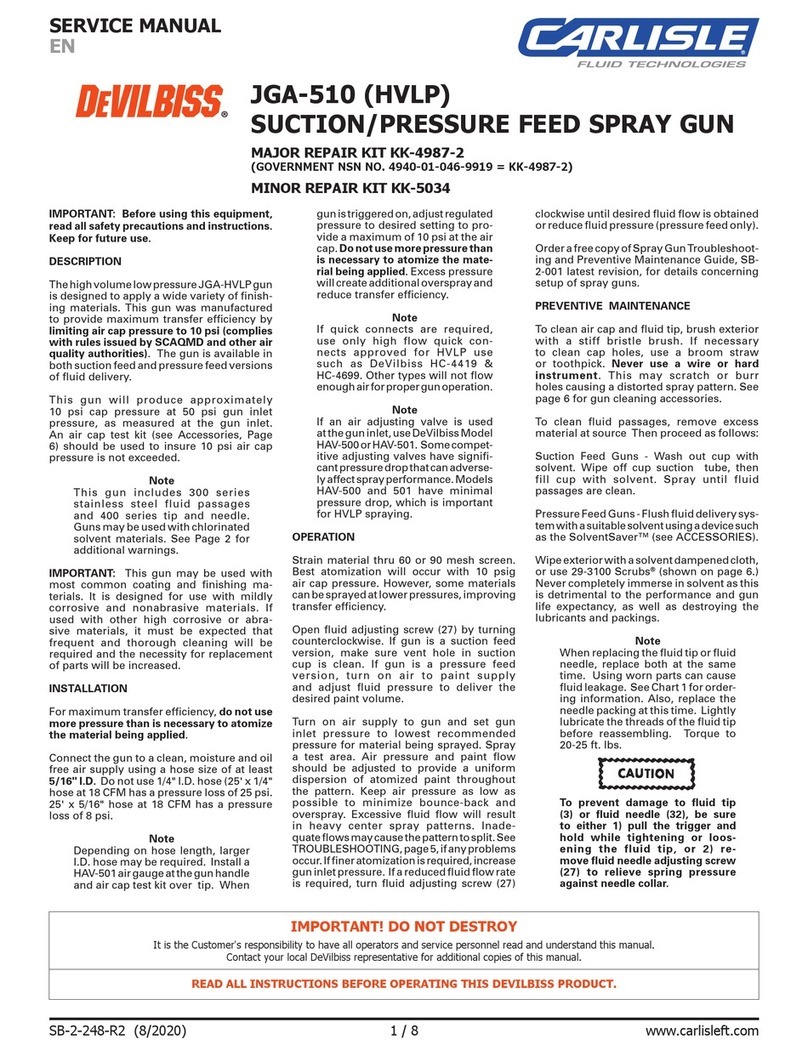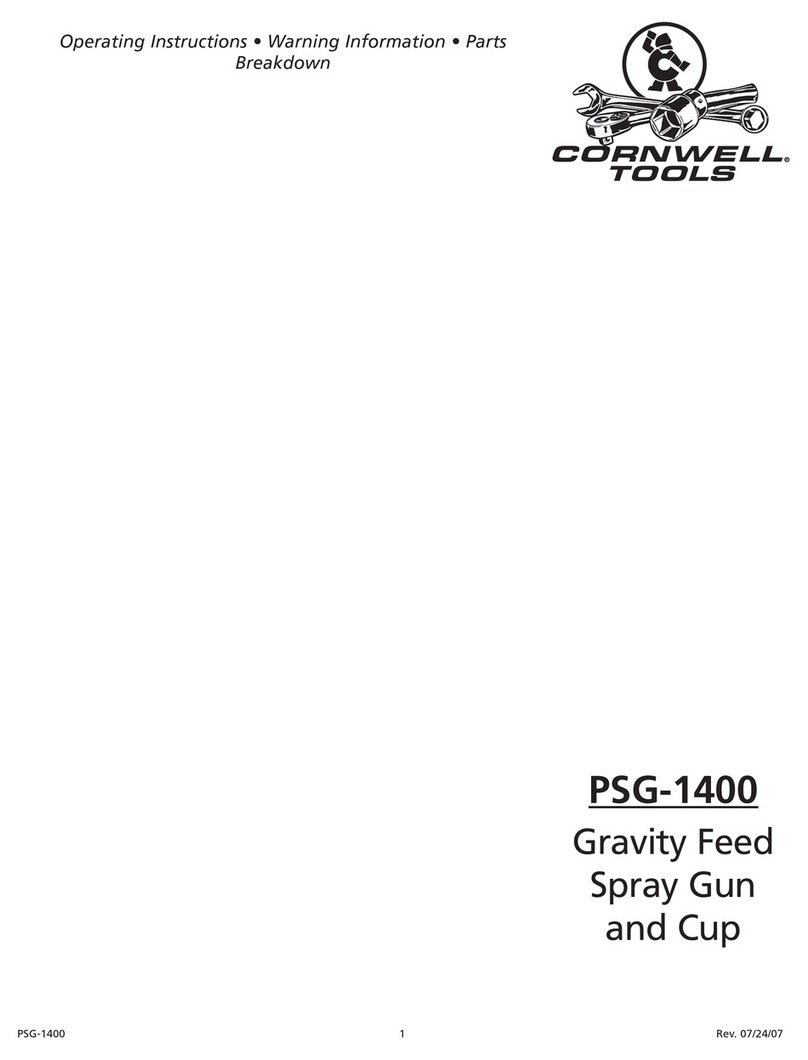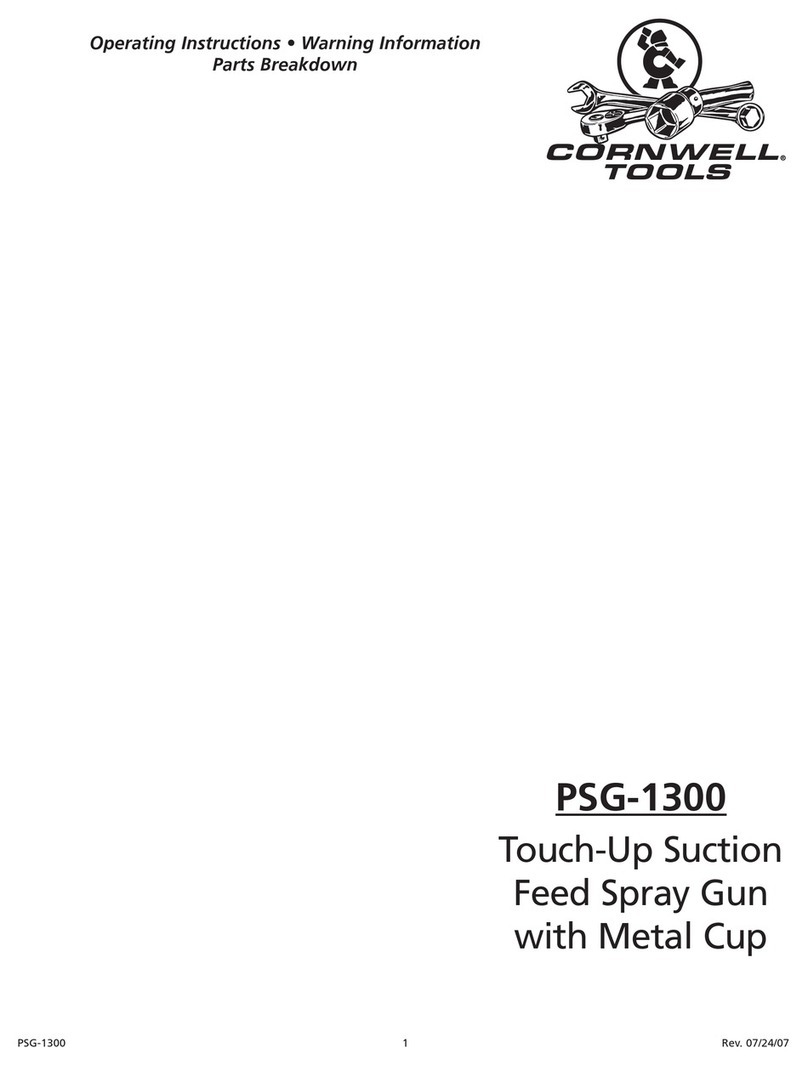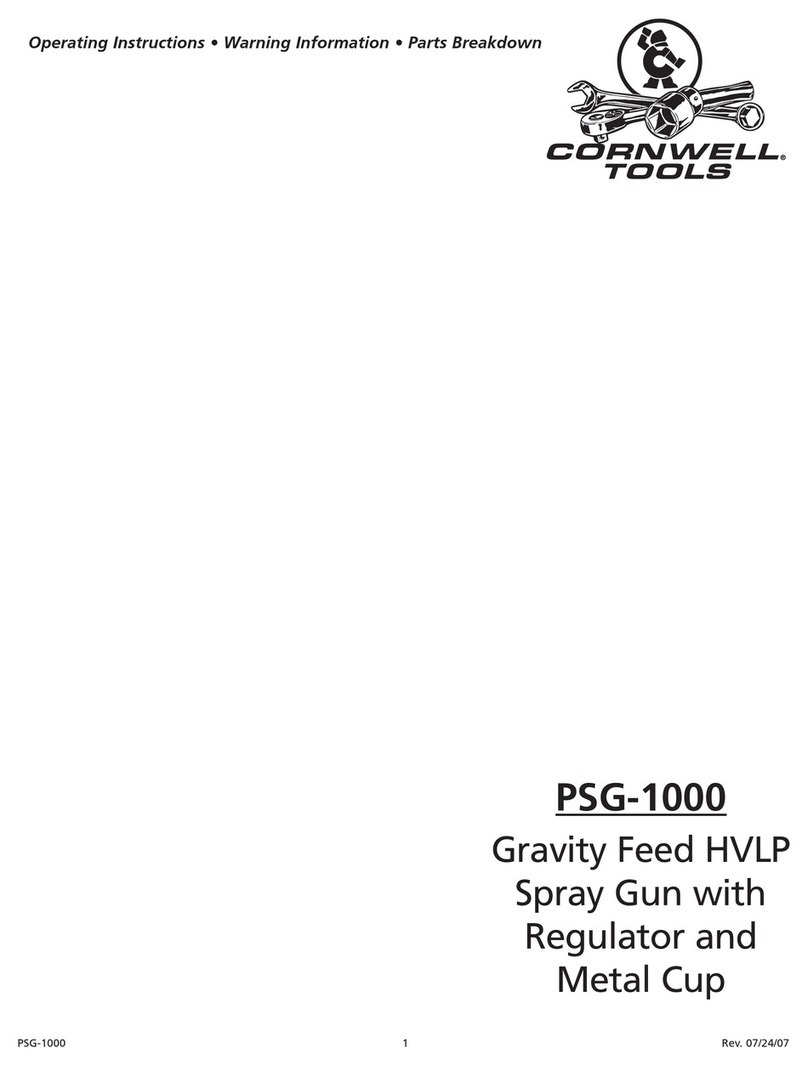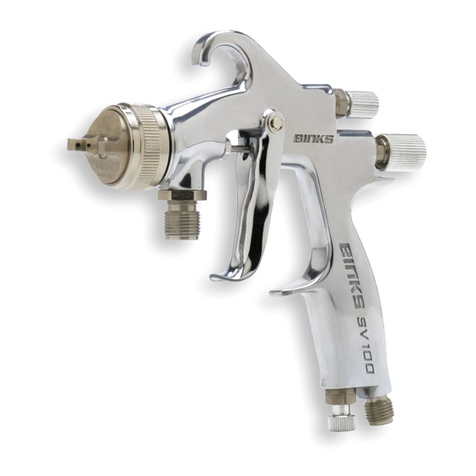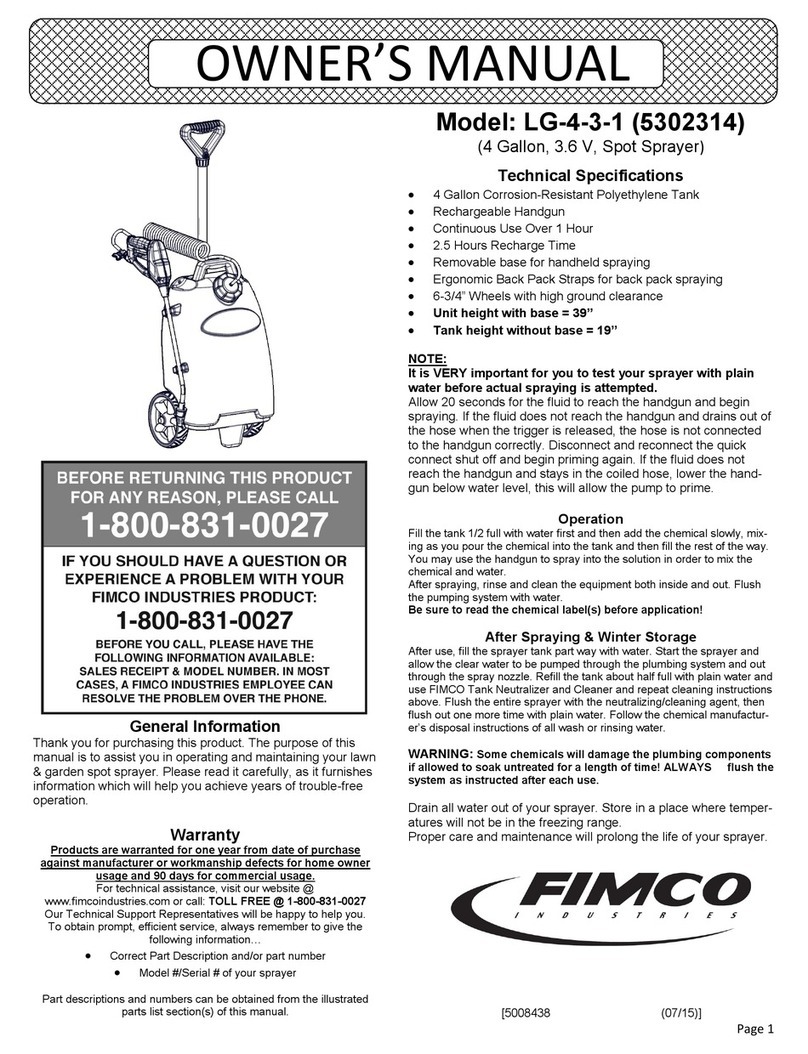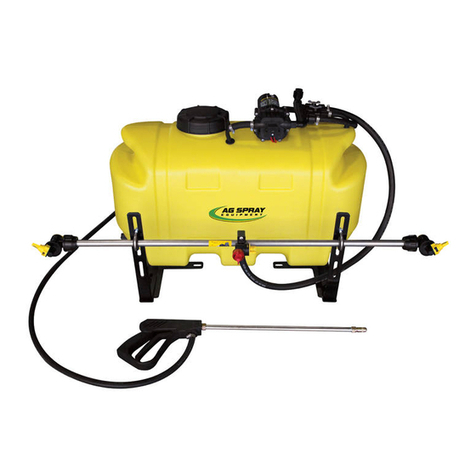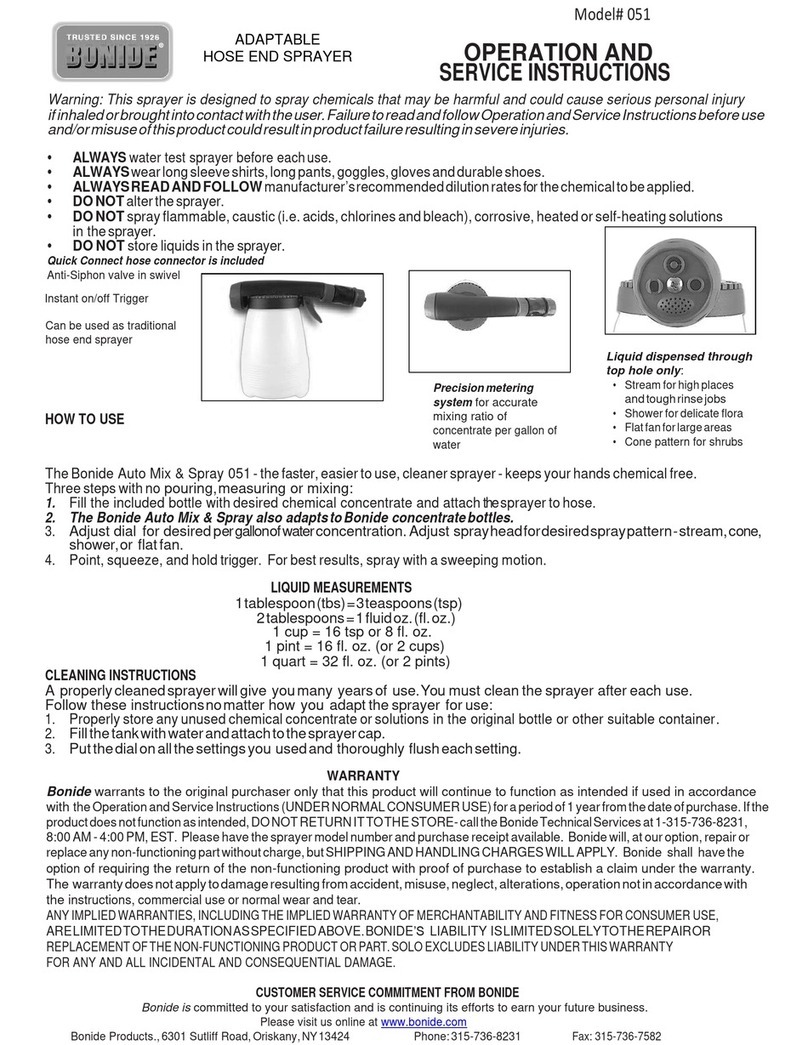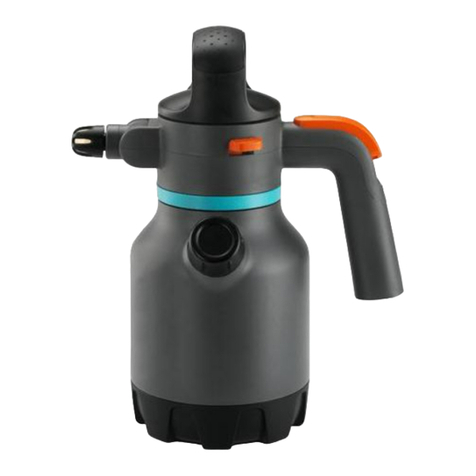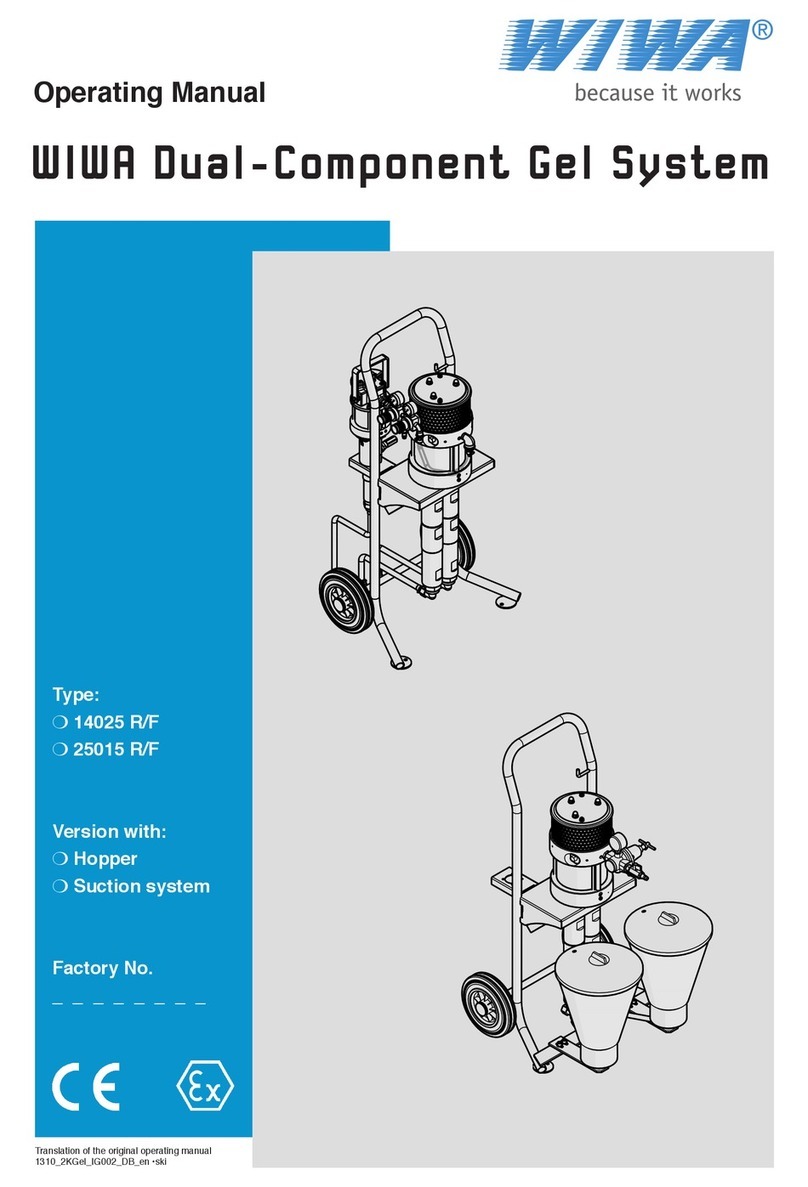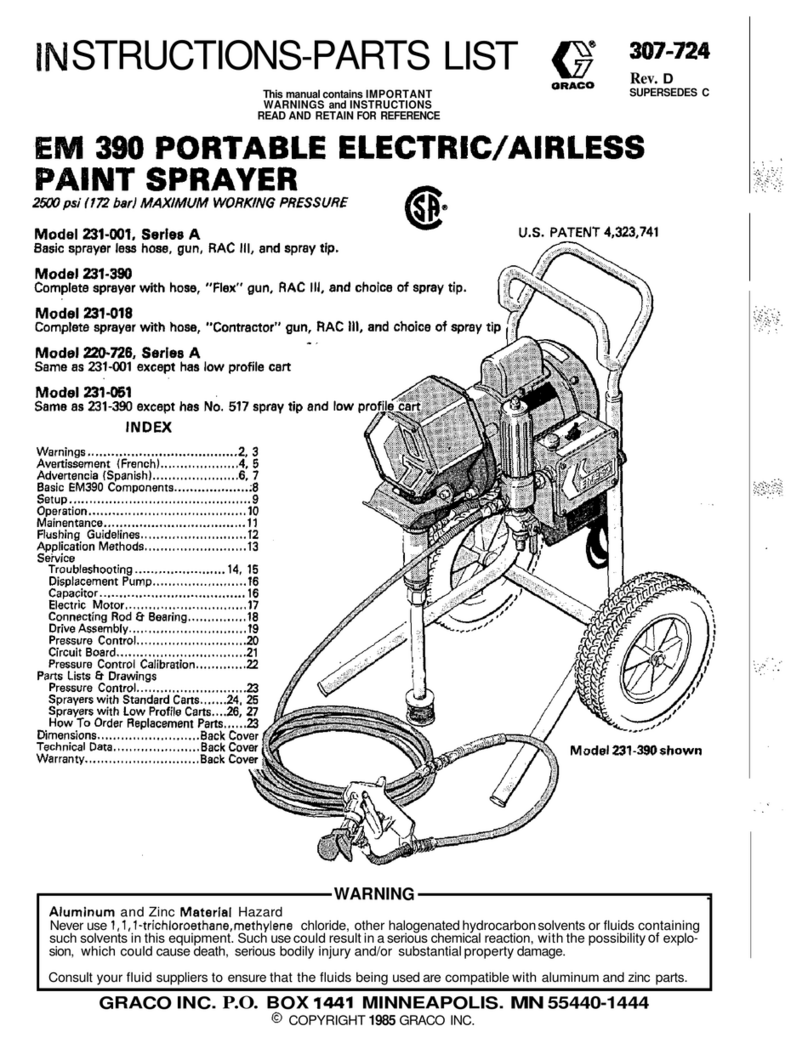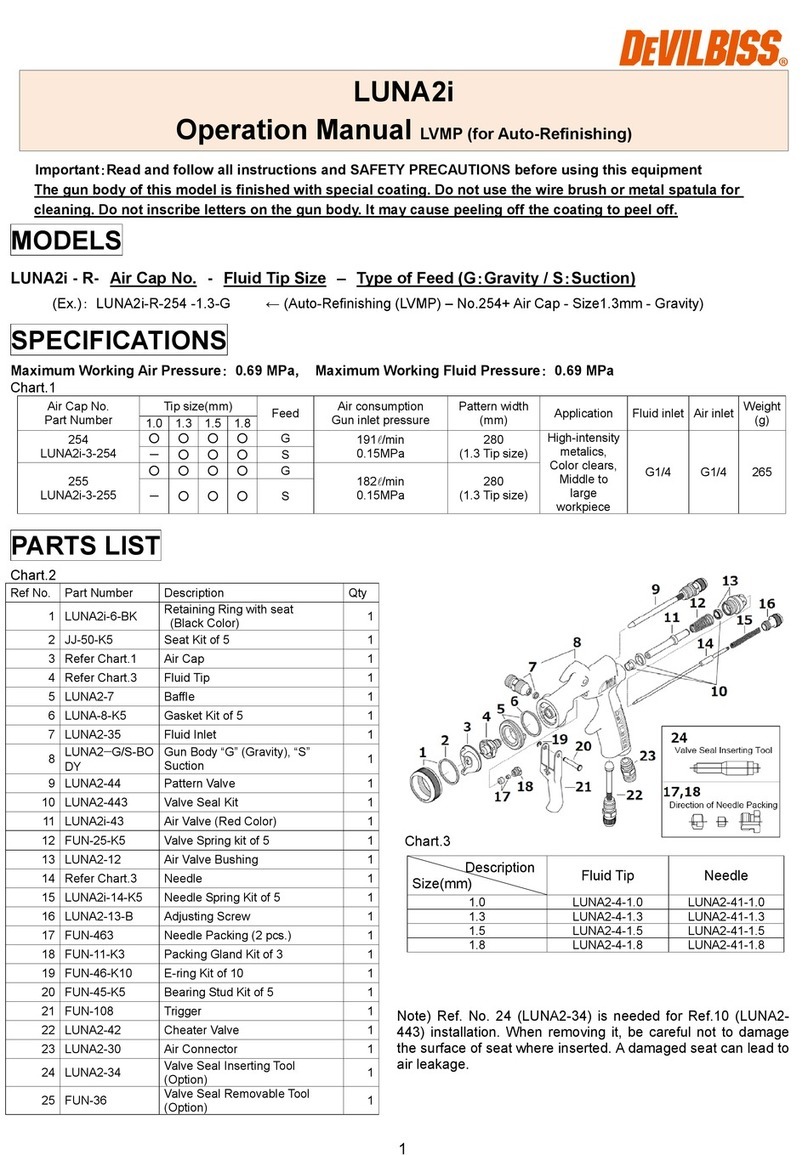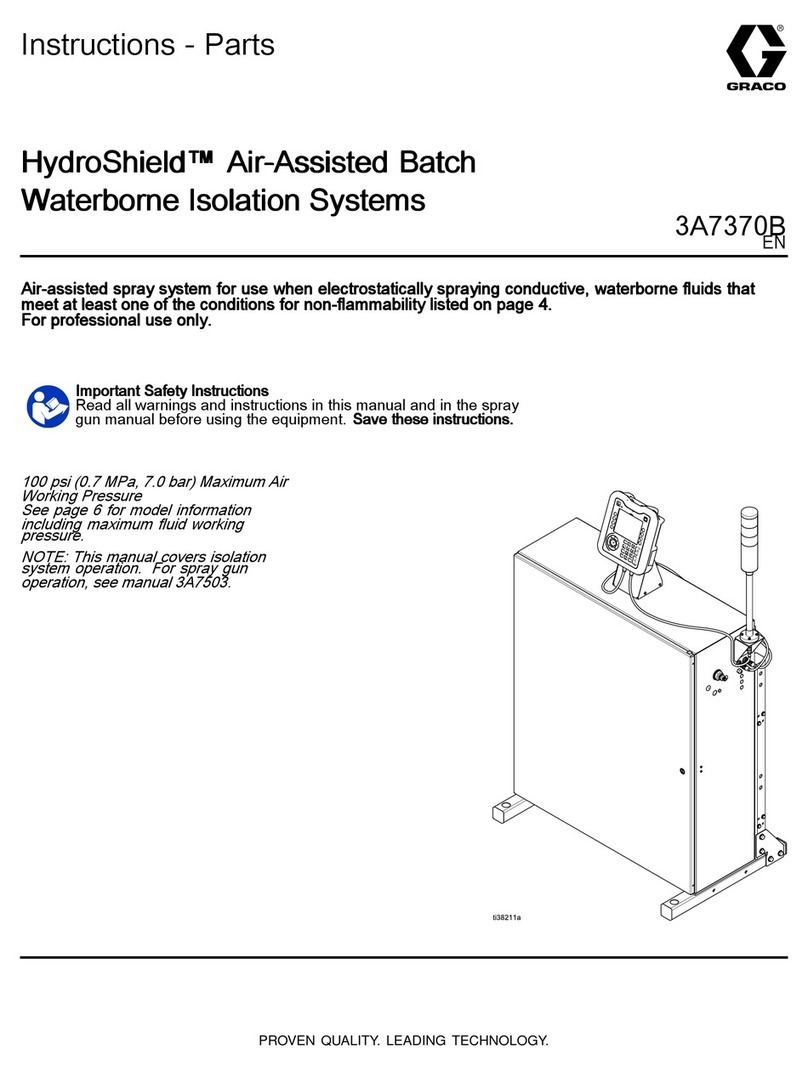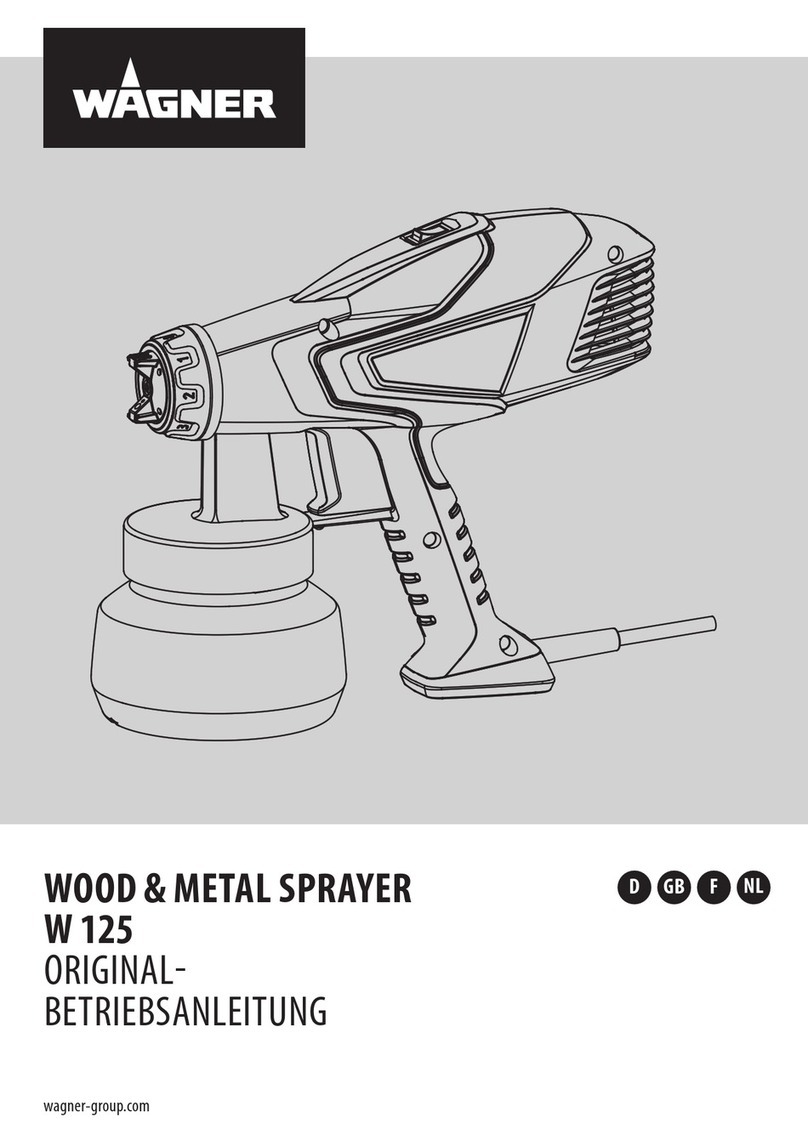
PSG-1200 2 Rev. 07/24/07
• During cleaning and flushing, solvents
can be forcefully expelled from fluid
and air passages. Some solvents can
cause eye injury.
• Be sure all others in the area are wearing
impact-resistant eye and face protection.
• Even small projectiles can injure eyes and cause blindness.
• Air under pressure can cause severe injury. Always shut off air
supply, drain hose of air pressure and disconnect tool from air
supply when not in use, before changing accessories or when
making repairs. Never direct air at yourself or anyone else.
Whipping hoses can cause serious
injury. Always check for damaged
or loose hoses and fittings. Never use quick
change couplings at tool. They add weight
and could fail due to vibration. Instead, add a
hose whip and connect coupling between air
supply, and hose whip, or between hose whip
and leader hose. Do not exceed maximum air pressure of 43
PSI.
• Always use tool a safe distance from other
people in work area.
• Maintain tools with care. Keep tools clean and oiled for best
and safest performance. Follow instructions for lubricating and
changing accessories. Wiping or cleaning rags and other
flammable waste materials must be placed in a tightly closed
metal container and disposed of later in the proper fashion.
• Do not wear loose or ill-fitting clothing, remove
watches and rings.
• Don’t over reach. Keep proper
footing and balance at all times.
Slipping, Tripping and Falling can
be a major cause of serious injury or
death. Be aware of excess hose left on the
walking or work surface. Don’t force tool. It will do the job
better and safer at the rate for which it was designed.
• Don’t abuse hoses or connectors. Never carry tool by the hose
or yank it to disconnect from power supply. Keep hoses from
heat, oil and sharp edges. Check hoses for weak or worn
condition before each use, making certain that all connections
are secure.
• High sound levels can cause permanent
hearing loss. Protect yourself from noise.
Noise levels vary with work surface.
Wear ear protectors.
• When possible, secure work with clamps or vise so
both hands are free to operate tool.
• Repetitive work motions, awkward positions and exposure to
vibration can be harmful to hands and arms.
• Avoid inhaling dust or handling debris from work
processes which can be harmful to your health.
• Operators and maintenance personnel must be physically able
to handle the bulk, weight and power of this tool.
• This tool is not intended for using in explosive atmospheres and
is not insulated for contact with electric power sources.
• Solvent and coatings can be highly
flammable or combustible especially when
sprayed. Adequate exhaust must be provided
to keep air free of accumulations of
flammable vapors.
• Smoking must never be allowed in the spray area.
• Fire extinguishing equipment must be present
in the spray area.
• Never spray near sources of ignition such as
pilot lights, welders, etc.
• Halogenated hydrocarbon solvents — for example; methylene
chloride, are not chemically compatible with the aluminum that
might be used in many system components. The chemical
reaction caused by these solvents reacting with aluminu can
become violent and lead to an equipment explosion. Guns with
stainless steel fluid passage may be used with these solvents
However, aluminum is widely used in other spray application
equipment - such as material pumps, cups and regulators,
valves, etc. Check all other equipment items before use and
make sure the can also be used safely with these solvents. Read
the label or data sheet for the material you inten to spray. If in
doubt as to whether or not a coating or cleaning material is
compatible, contact your material supplier.
• Sprayed materials may be harmful if inhaled,
or if there is contact with the skin. Adequate
exhaust must be provided to keep the air free
of accumulations of toxic materials. Use a
mask or respirator whenever there is a
chance of inhaling sprayed materials. The mask must be
compatible with the material being sprayed and its
concentration.
WARNING - FOLLOW THESE RULES FOR SAFE OPERATION!
